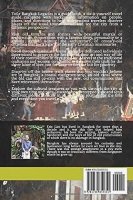- Home
- Royal Barge Museum
- History of the Royal Barges
History of the Royal Barges
a timeless tradition
By Eric Lim
The history of the royal barges dates back to the Sukhothai era in the 13th century when the first royal barges were reportedly seen. It's a traditional royal ceremony that has retained all the pomp and grandeur over the centuries in Thailand.
The barges were originally troop carriers at a time when it was more expedient to transport troops into battle along rivers. As life in Thailand then was so intimately linked to the river, these barges were also used for religious and ceremonial purposes.
During the Ayutthaya era between the 14th - 18th centuries, the royal barge ceremonies flourished particularly during the reigns of King Naresuan and King Narai.
King Naresuan (1590 – 1605 AD) named his personal barge Suphannahongsa, the golden swan or hamsa, the mythical steed of Hindu God Brahma and started the first generation of this famous royal barge. Since then, this has been the name of the King's personal barge. Two more versions have been built since.
In the reign of King Narai, the Royal Barge Procession became more elaborate and one such procession had more than 100 vessels.
Unfortunately all this came to an abrupt end in 1767 when the Burmese sacked Ayutthaya and destroyed all the barges. It was a sad period in the history of the Royal Barges.
The Thonburi era (1767 – 1782) under King Taksin saw a reemergence of royal barge activity. During his reign the Emerald Buddha was brought from Vientiane to Ayutthaya.
A hundred and fifteen barges went to Ayutthaya to receive this holy statue and bring it back to Bangkok. Another 131 vessels went up river to welcome the Emerald Buddha.
The Bangkok era, which commenced in 1782, saw a new dawn in the history of the Royal Barges.
King Rama I revived the tradition of the royal barges. Sixty were built and modeled on designs in the early Bangkok era. A new Suphannahongsa was built to serve as the King's personal barge.
Royal barge construction continued under the reign of the Chari kings. King Rama IV ordered the construction of the Anantanakkharat with the seven-headed serpent, Naga on the bow.
During the reign of King Rama V, a new Suphannahongsa was built. It was completed during the reign of King Rama VI in 1911. This version of Suphannahongsa is being used to this day as the King's personal barge.
The coup in 1932, when Thailand changed from an absolute monarchy to a constitutional monarchy, brought about another halt to royal barge activity in its history. Subsequent military governments banned the Royal Barge Ceremonies for the next 25 years.
The royal barges suffered a further setback during World War II, when Japanese bombs damaged several barges. Sections of these barges are still preserved at the Royal Barge Museum.
In 1957 the history of the royal barges took a turn for the better when King Rama IX, the present king, had the barges restored to their former glory.
On 19 May 1957, the first Royal Barge Procession in 25 years sailed down the Chao Phraya River to commemorate the 25th century of the Buddhist Era (BE 2500).
Since then, the Royal Barges have continued to sail down the Chao Phraya River in all their splendor, on special and auspicious occasions, preserving an enduring and timeless tradition.
To return to the Royal Barge Museum.
Tour Bangkok Legacies - Kindle paperback edition
If you are an independent traveller, here's a handy paperback, Tour Bangkok Legacies, which will help you along as you explore the streets of Bangkok and discover its old treasures. It's complete with historical descriptions and directions on how to get to these places.
My Kindle paperback edition

Search Tour Bangkok Legacies with DuckDuckGo
Royal Barge Processions


